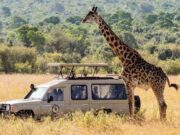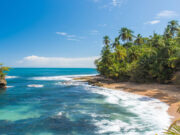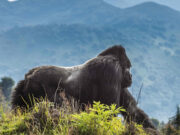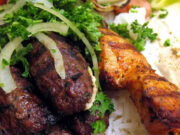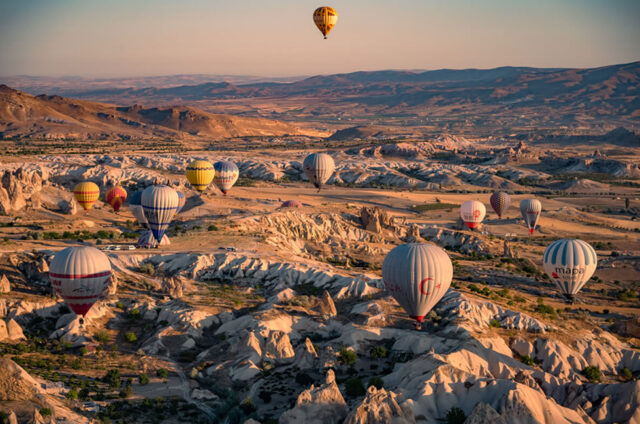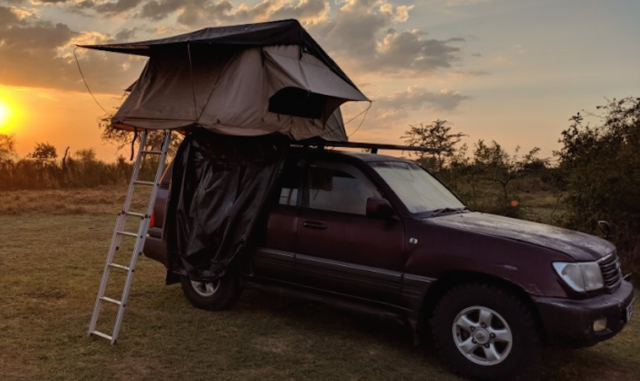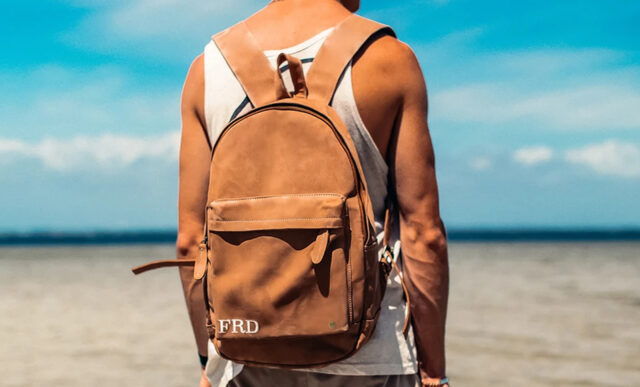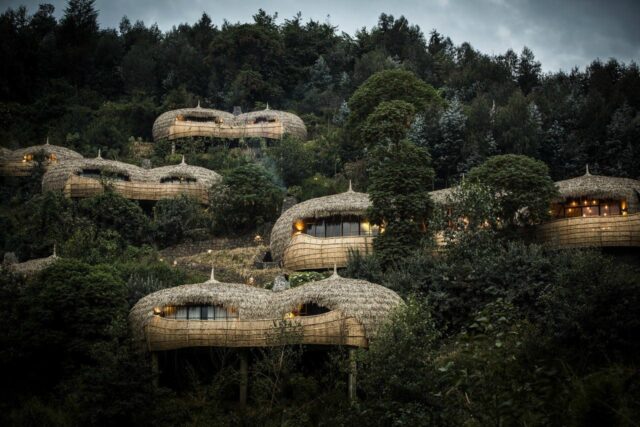
One of the greatest aspects of being a travel magazine in this day and age is learning about and sharing some of the more thoughtful new products that are being created in the industry. Our lives have been changed by new technologies like those found in the GRAYL purification water bottle. Our luggage is lighter because of the genius engineering of Bluffworks. And now, our travels are about to get so much more tasty because of the new travel guide series, Authentic Food Quest.
The first guidebook in this new series, Authentic Food Quest Argentina: A Guide to Eat Your Way Authentically Through Argentina, was chalk-full of information. According to the authors of the guide, it’s mission was to be a scrumptious guide that took the hassle out of doing all the research about Argentine cuisine and gave travelers the tools to have their own culinary adventures. The guide promised stories of local dining adventures, recipes, travel tips on how to get the most authentic experience around the country, and more; and boy, it delivered!
This wasn’t a typical guidebook, where you flip to a region and get a brief summary with a list of addresses. By the time we had finished reading the book (which took less than a day, we were so engrossed in the content), we felt like we had tasted our way through the country alongside the authors and we couldn’t wait to go back! It was obvious that the authors, Rosemary Kimani and Claire Rouger, poured every drop of their passion, heart and energy into this guide. We had to get a hold of them and ask them how they did it. Here’s what they said:
What inspired you to create this guide?
Our mission is to inspire people to travel through food. We believe that when you travel through food, you can have deeper and more meaningful connections with the locals at the destination. Food offers us a window into the local culture, people and region/country.
Through this book, we want travelers to open up to new tastes and flavors and have a deeper connection and travel experience in Argentina. By seeking out the local dishes, visiting the farmers markets, local food stores and more, travelers will have a richer experience.
Why did you decide to focus on Argentina?
Argentina is a very popular destination and it is also the most visited country in South America. One of the biggest misconceptions about the food in Argentina is that it is limited to beef and Malbec wines. As we traveled throughout the country, we found the cuisine to be varied and distinctive.
Given the rich gastronomy and regional dishes combined with the popularity of Argentina, we decided to focus our first book on the delicious and authentic cuisines found in the country. Through this book, we would like food enthusiasts to know that Argentina has so much more to offer beyond beef and Malbec wines.
Authentic Food Quest Argentina takes readers on a culinary journey through four main regions of Argentina: Buenos Aires, Mendoza & the Wine Regions, the Andean Northwest, and Patagonia & the Lake Region. Over 50 authentic foods, desserts, beverages, and street foods are highlighted. More than 270 references of authentic restaurants, wineries, farmers markets and local food stores are provided.

What were some of your favorite moments creating this guide?
The “research phase” was what we enjoyed the most in the process. Wandering around the markets, talking to vendors and chefs, connecting with locals and learning about the traditional dishes was quite remarkable. And of course, we cannot forget eating the food.
When it came to creating the guide, learning about the self-publishing process was quite an eye opener. Neither one of us has experience in publishing, so this was a completely new arena to learn and implement. Through self-publishing, anyone can bring their story to life. The tools exist and if we can do it, anyone can.
Were there challenges you didn’t foresee in putting it together?
One really unexpected challenge we faced was hunger. Every time we sat down to write, and even though we had just eaten, we would immediately start getting hungry. We had to break multiple times during the book writing process to eat. One benefit that came out of this experience was making dishes from recipes we picked up in Argentina.
The process of putting the book together took much longer than we had anticipated. While we managed to keep to our schedule for the writing portion of the book, the formatting took more time than expected. We self-published the book and created two versions – Kindle and paperback. The formatting for each platform was unique and the book needed to be adjusted to fit the parameters. While we worked with a terrific graphic designer who was very responsive, we had not anticipated the extra steps and time.

Empanadas for everyone! – Photo courtesy of Authentic Food Quest
Was there anything you decided to leave out of the guide that you wished you’d left in?
The guide is pretty comprehensive and everything we wanted to include was captured. The only thing we would have wished to include were additional pictures of the beautiful country. We were able to include the food photos we wanted and prioritized them over landscape pictures.
Would you do anything differently the next time around?
Judging by the initial feedback we received from our readers, people really enjoyed the stories we shared about meeting top Argentina chef, Francis Mallmann, the chefs and cooks in Mendoza, our first asado and others. To build on the personal narrative, in future books we will tell more stories about the people we meet, including how we meet them and our experiences together, and of course the dishes.

Cazuelade Llama – Photo courtesy of Authentic Food Quest
Do you have a favorite story in the guide?
One of our favorite stories from the guide is about our first asado experience in the Pampas of Argentina. Here we tell the story of getting invited to an estancia (working farm) and attending a very traditional asado (barbeque). In Argentina, an asado goes way beyond the food and is really about shared moments in the company of loved ones. We share the story of the food, the traditional folklore music and the gaucho culture. We bring the Argentine culture forward through the food.
What is your information gathering process? How do you collect all that delightful data?
When it comes to discovering the local and authentic dishes of a country, we take a 4-step approach:
-
We start by researching the authentic and traditional dishes ahead of time. We read books, journals and research online to learn about the traditional food of the country.
-
We connect with locals prior to traveling and also when we arrive in the country.
-
We visit local farmers markets and food stores to see the local produce and regional specialties.
-
We interview local experts who help us understand the local specialties and their cultural significance. This is a broad group and it includes chefs, restaurant owners, market vendors, gastronomy experts and more.
Our approach combines both observations and advice from locals. What makes this work is having a healthy dose of curiosity and the ability to travel “slow.” We stay with locals on our travels and this immersive experience helps us connect deeper with the local food culture.

Rosemary Kimani and Claire Rouger in Cumana – Photo courtesy of Authentic Food Quest
What was the most important lesson you learned during this experience?
Given that neither one of us has a writing or journalistic background, we were quite apprehensive about two things – writing a book and whether our story would be well received. After seven months (writing to publishing the paperback version) we have learned to “go beyond fear” and work towards our goal. When the initial feedback we received from our editor was positive, we were uplifted and encouraged. To bring the book to life, we engaged partners including an editor, graphic designer, book cover designer and several beta readers. So, what we learned from this experience is: in order to realize your dream, you must work towards your goal and engage partners with the expertise you don’t have.
What has been the response to the guide so far?
The response to the guide has been very positive. Readers have enjoyed the easy to follow format, the range of foods highlighted – from street foods, to traditional dishes and unique produce, as well as the markets and restaurants to sample the delicacies. In addition, what also meant a lot to us was feedback from our Argentina readers who relived their memories in our book and felt that we captured the cultural nuances accurately.
We are selling both Kindle and paperback versions of the book almost equally. Our initial idea was to launch only the Kindle version, which is convenient for travelers to download and carry. After the Kindle version came out in July, one unexpected request we received frequently was for a paperback version. This led to the creation of the paperback book, which came out in September. Despite the move to digital products, we have learned that there is still a fair amount of people who still prefer holding a copy of a book in their hands.
What is the next guide going to be about? Can we get a sneak peak at a favorite highlight?
The next book will be about the authentic dishes we discovered in Peru. Discovering the food from the Amazon was an unexpected and amazing experience. While we did not visit the Amazon rain forest, we had the chance to explore the surprising cuisine in Lima, as well as taste unique and strange fruits. We will be highlighting these dishes in our next book and inviting travelers to Peru to eat the local delicacies from the Amazon.
La Boca, Caminito – Photo courtesy of Authentic Food Quest
About the Authors:
Rosemary Kimani and Claire Rouger are co-founders of Authentic Food Quest. They aim to transform travelers experiences through the discovery and knowledge of authentic food. They believe that by traveling through food, people have more meaningful connections with the local people, food and culture.
In 2015, they traded in their corporate jobs to eat their way around the world. Starting out in South America, they traveled to Argentina, Uruguay, Chile and Peru and spent 6 months discovering the authentic foods in the region.
Now authors, they recently published their first book available on Amazon and Barnes & Noble Authentic Food Quest Argentina: A Guide To Eat Your Way Authentically Through Argentina.
Their authentic food quest continues in Southeast Asia, where you can join them as they discover and highlight the authentic dishes of the Philippines, Thailand, Cambodia, Vietnam, and Malaysia.



